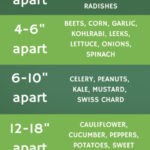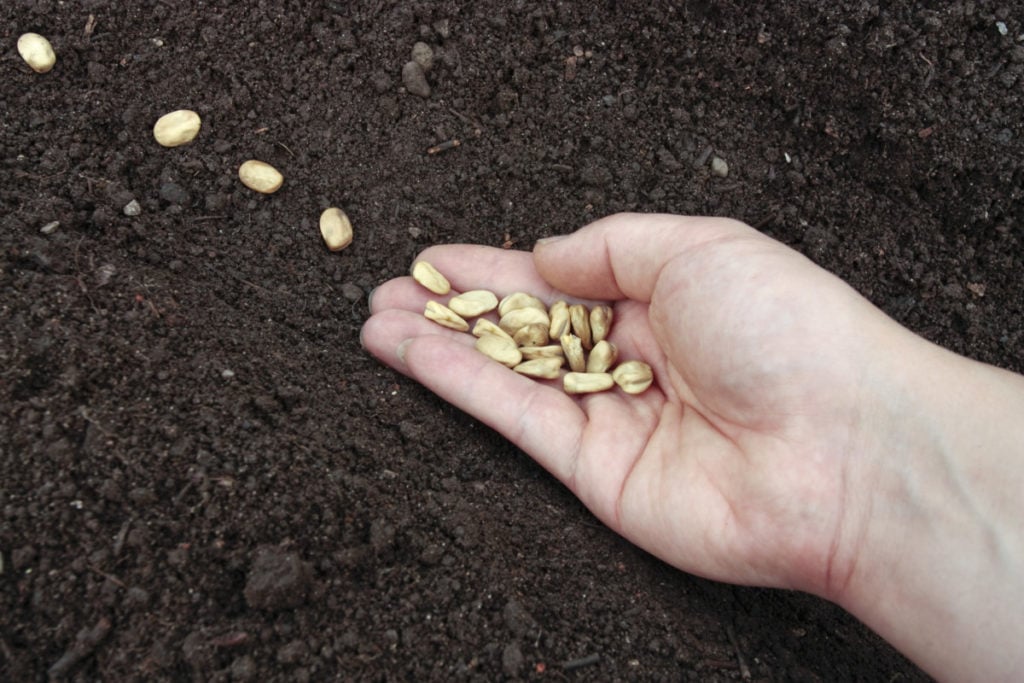
Following a plant spacing guide to plan your garden is like copying a recipe in a cookbook. Your harvestable results will vary based on personal skills and ingredients – the quality of seeds, soil, fertilizer and water.
A plant spacing guide is just that – a guide.
Remember to take measurements loosely, using common sense, and I can assure you, you’ll have plenty to harvest in your garden.
The benefits of growing your own food.
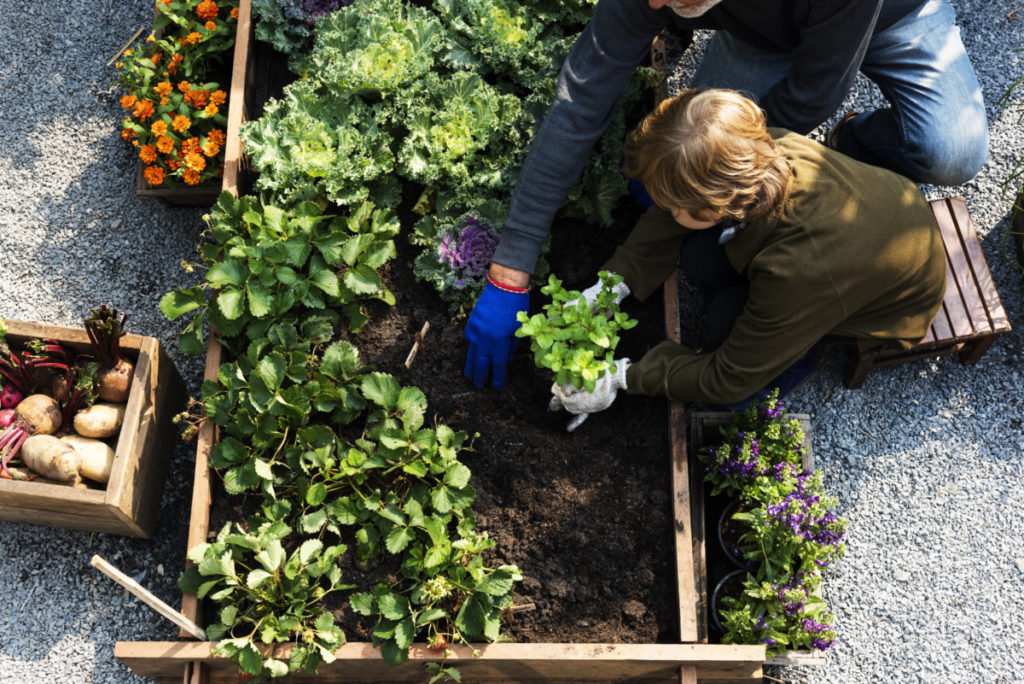
Gardening is a wonderful activity that feeds us and our families with wholesome and nutritious homegrown food. We spend more time outdoors and immerse ourselves in the natural world.
Yet, gardening is often more complex than we expect it to be.
If you think you can master it in one growing season, then you’re one optimistic gardener indeed. As any master gardener will tell you, it takes several growing seasons to fully understand what goes on behind the scenes.
As if gardening wasn’t already loaded with questions related to irrigation, which varieties are best to plant in full sun or partial shade, where do the rules of companion planting apply, along with when to plant each vegetable and more…
…you’ve got the question of plant spacing.
How close together, how far apart, how deep to plant each seed and how long will they take to germinate?
Before you’re ready to head outside with seeds aplenty, let’s clear up a few questions first.
General Questions About Planting Seeds
Not all of your seeds will be planted at once.
You’ll need to stagger your planting throughout the growing season for various reasons:
- leaving space for intercropping
- allowing for succession planting
- working with the weather
- and honoring each vegetable’s preferred germination soil temperature
Some seeds can go in the ground as early as February, others will need to wait until May or June.
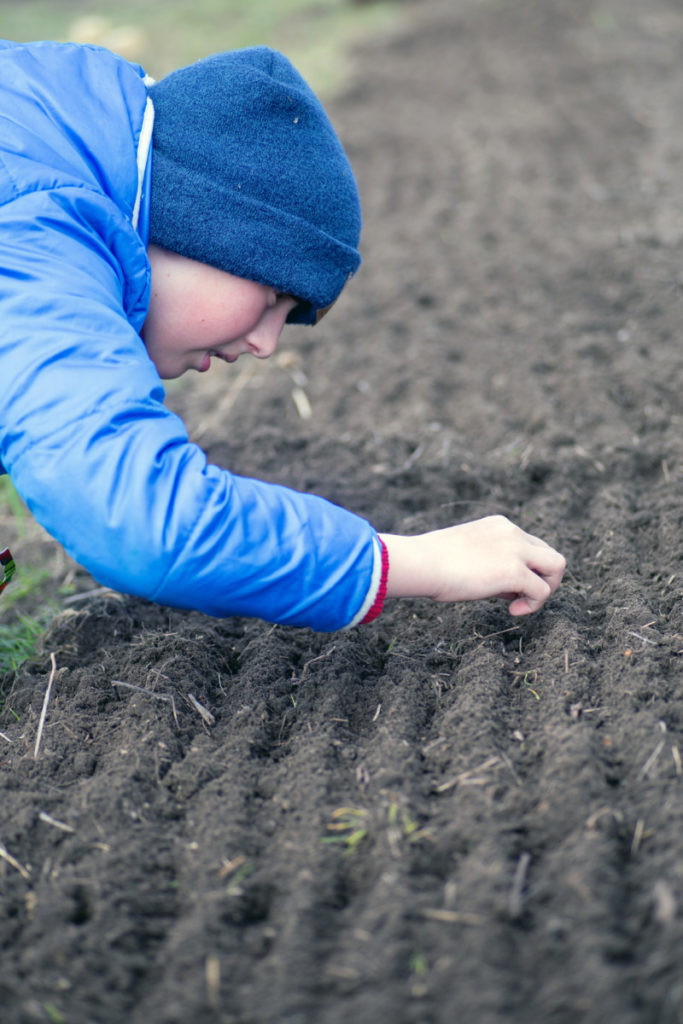
Once you’ve purchased all of your garden seeds, turn the packages over and read the label on each. This will be a good general indicator of when they should be planted.
Again, like a recipe in a cookbook, this is wise advice, but not set in stone. You’ll also want to be aware of weather patterns, soil conditions and last expected frost dates for where you live.
Then you’re ready to plant – almost.
How deep to plant seeds?
Plant spacing goes hand-in-hand with how deep to plant seeds. It’s best to acquire the knowledge of both at once.
As a general rule, from a green thumb, seeds should be planted two or three times as deep as the width of the seed.
Better shallower than deeper, as those that are far underground run the risk of rotting in wet/damp soil.
Planting seeds too shallow in the soil run the risk of being exposed to birds and other creatures.
It is important to realize that different seeds have various germination requirements.
Some seeds need light to germinate, such as lettuce, which barely needs to be covered at all. Simply press your lettuce seeds into the soil and keep them moist until they germinate. You may choose to use a floating row cover if birds are plucking them by the dozens.
Seeds that need only a light soil cover to germinate include:
- broccoli
- cabbage
- cauliflower
- collard greens
- cucumbers
- eggplants
- kale
- kohlrabi
- leeks
- melons
- peppers
- squashes
- tomatoes
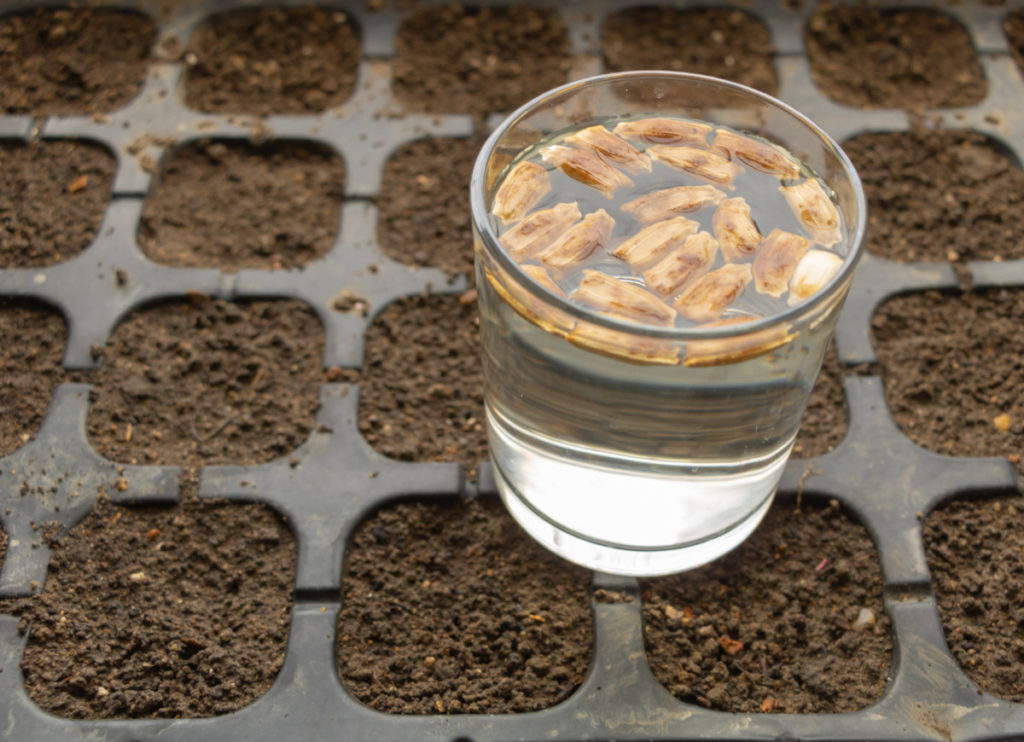
You’ll also find that some seeds germinate better when soaked in water overnight – beans, carrots, corn, peas and pumpkins. Whereas other seeds will benefit from being lightly scratched – melons and squashes.
With each gardening season that passes, your gardening wisdom will grow.
Soon you will “feel” what is right, no questions asked.
But for now, how about that plant spacing guide for healthier plants and more abundant harvests?
Why it’s Important to Space Your Garden Plants Properly
Naturally, there are unlimited ways to garden. This is lucky for all of us with different soil conditions, various working hours and divergent tastes.
One thing that remains constant in the garden, however, is that plants need their own space.
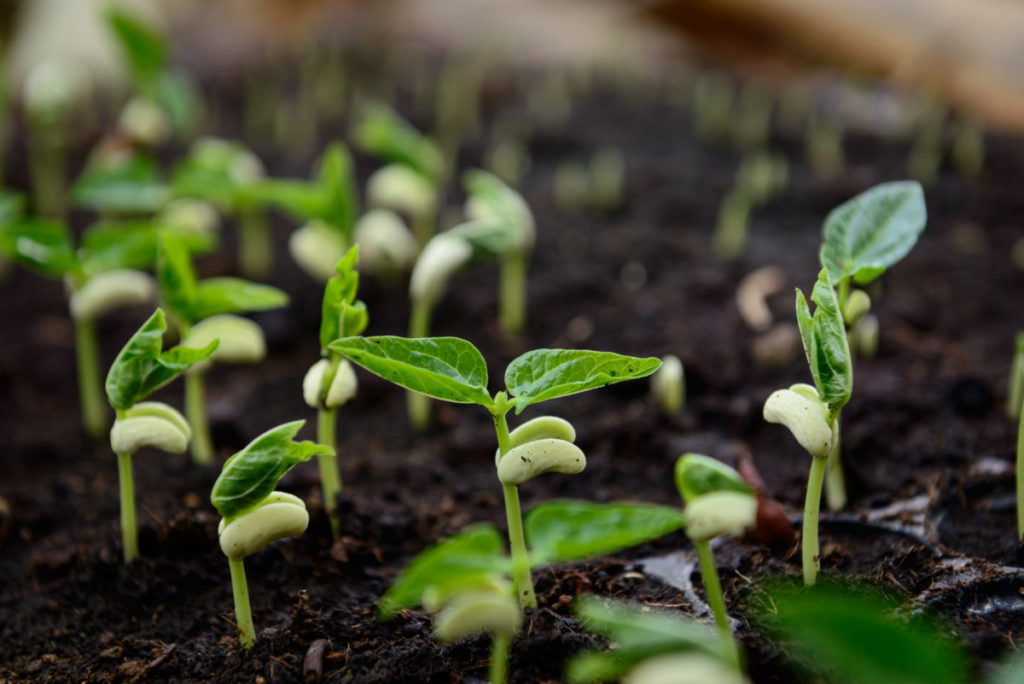
There are times when plants prefer to intermingle, as is the case with Three Sisters, but for the most part, garden veggies are demanding that they not be overcrowded.
When plants are spaced too close together, they tend to compete for nutrients. Scarcity of nutrients directly relates to stressed plants, which fosters the chance for disease, in turn attracting insects of the non-beneficial kind.
No one wants this downward spiral in their garden.
So, for the love of plants, be sure to space your veggies within a line and give space between the rows too.
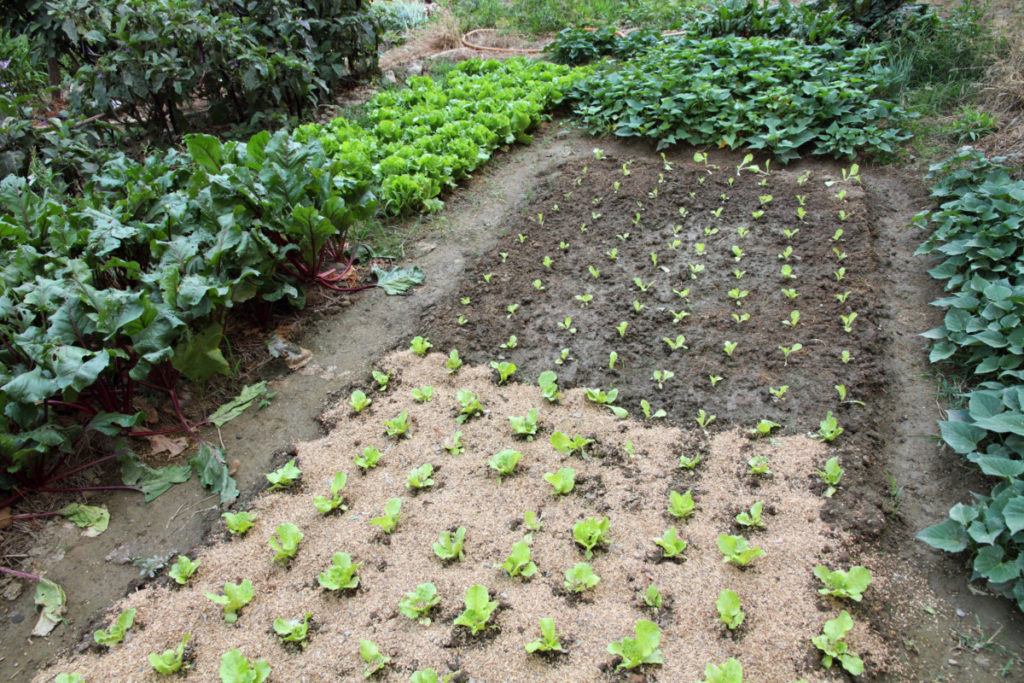
If it just so happens that you get overzealous in sowing seeds in a particular row, you can always thin the seedlings out when the time is right.
We often do this with carrots – sowing carrot seeds densely in a row, waiting (im)patiently for the seeds to germinate (14-21 days), then plucking out the smaller ones for salads, so as to give the roots plenty of space to grow.
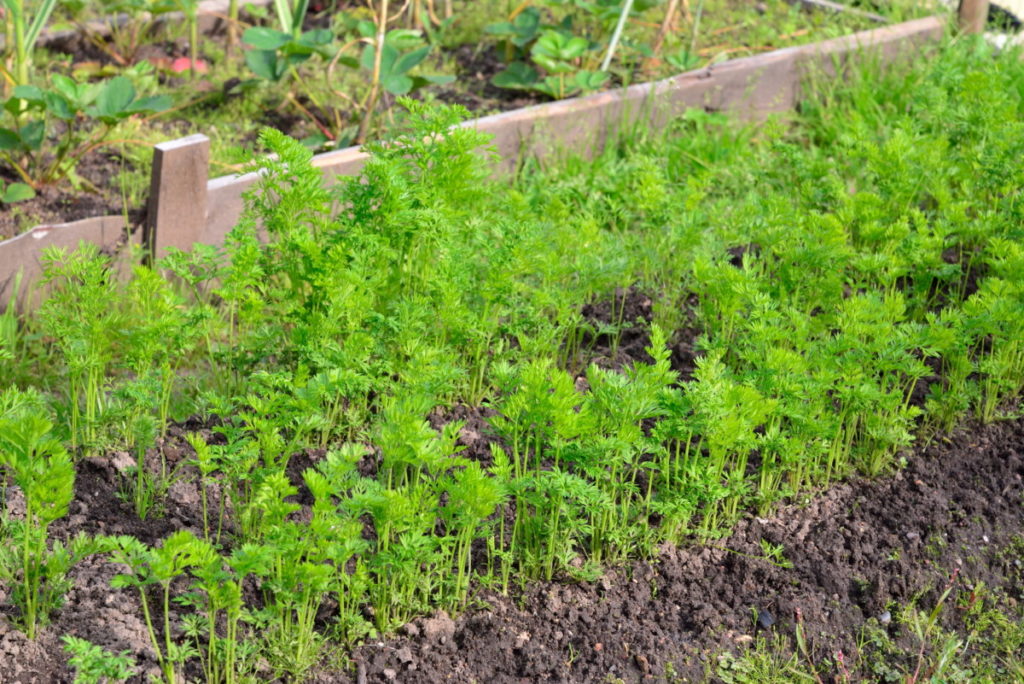
If not thinned in time, they will intertwine and become knobby. Cute, but not so straight. Carrots don’t do well when transplanted, though when they’re small, you can eat them roots, leaves and all!
It also pays to plan for the spacing of plants to prevent disease, allow adequate sunlight to reach the vegetables as they ripen, and care for their overall health.
Garden-distancing is definitely the way to grow.
Plant Spacing Guide for Maximum Harvests
As previously mentioned, spacing values are estimates to help you gauge the distance between your rows of garden crops, as well as within each row.
You may need to move rows closer together, or further apart, depending on the varieties that you’re growing, and how much you wish to squeeze into a tiny garden without harming the plants.
Once you get the hang of plant spacing, you can then get creative in the garden.
Plant in arcs and curves instead of straight lines, intersperse different plants within the same row, and think of your garden as a well-designed foodscape, rather than a conventional garden.
Most of all, have fun with gardening; it makes the rewards that much greater.
Before making your own rules, it’s often a good idea to look at what has already been done.
Garden vegetables appreciate a certain amount of space between each plant and a somewhat flexible amount of space between each row. Part of this is for the benefit of the fully grown plant, while some of it is for your convenience of getting between the rows to pull weeds, apply mulch or irrigate when necessary.
30 Common Garden Plants & Their Spacing Requirements
With the ultimate goals of growing healthy plants and maximizing abundant harvests, keep this plant spacing guide in mind as you figure out how much you can fit into your garden.
Beets: sow seeds 4-6″ apart, 12″ between rows
Broccoli: plant 18″ apart, 24″ between rows
Bush beans: sow seeds 2-3″ apart, 24″ between rows
Cabbage: thin to 18-24″ apart, 24-36″ between rows
Carrots: thin to 2″ apart, 10″ between rows
Cauliflower: plant 12-18″ apart, 24″ between rows
Celery: plant 6-10″ apart, 24″ between rows
Corn: sow seeds 4-6″ apart, 30-36″ between rows
Cucumber: plant 12-18″ apart, 36″ between rows
Eggplant: plant 18-24″ apart, 30″ between rows
Garlic: plant cloves 5-6″ apart, 8″ between rows
Kale: thin plants to 10″ apart, 18-24″ between rows
Kohlrabi: sow or transplant 6″ apart, 12″ between rows
Leeks: sow or transplant 6″ apart, 12″ between rows
Lettuce: thin plants to 4-8″ apart, 12-18″ between rows
Onions: plant 4″ apart, 10-12″ between rows
Melons: plant 36″ apart, 3-6′ between rows
Parsnips: thin to 3-4″ apart, 18″ between rows
Peanuts: plant 6-8″ apart, 24-36″ between rows
Peppers: plant 10-18″ apart, 18″ between rows
Pole beans: plant 3″ apart, 3″ between rows
Potatoes: plant 12″ apart, 3′ between rows
Pumpkins: plant in nests with 2-3 seeds, 4′ between rows
Radishes: thin to 1″ between plants, 4″ between rows
Rhubarb: plant crowns 3-4′ apart
Spinach: thin to 3-5″ apart, 8-10″ between rows
Sweet potatoes: plant 10-18″ apart, 36″ between rows
Swiss chard: thin to 8-10″ apart, 18-24″ between rows
Tomatoes: plant 18-24″ apart, 24-36″ between rows
Zucchini: thin to 12-15″ apart, 24-36″ between rows
Plant Spacing Chart
For visual learners, here’s a handy plant spacing chart.
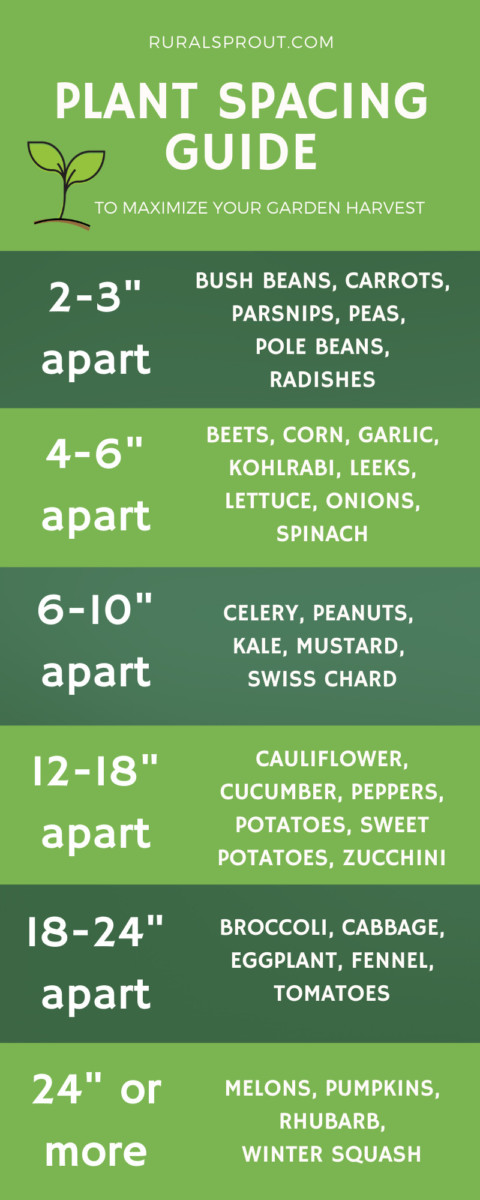
Some gardeners like to whip out a calculator, graph paper and pencil to plan their gardens down to the very last detail. If you are detail-oriented, by all means, do what it takes to make it easy (and fun!) for you.
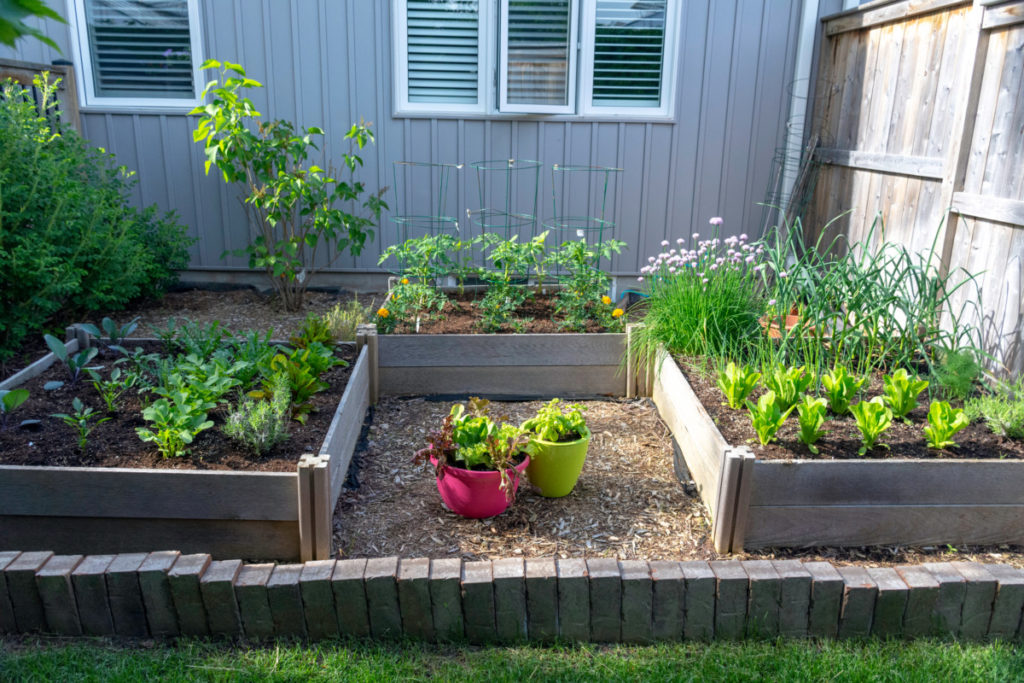
If you’re more of a let’s-wing-it-and-see type of gardener who plants with a plan in mind, that is alright too.
Before you go and get your hands dirty, read through these few tips on how to best space your plants, so that you don’t end up with an overcrowded garden.
Plant spacing tips
When sowing seeds out in the garden, it’s often hard to resist the urge to plant more seeds. It seems there is so much space and with the seeds being so small, everything should fit…
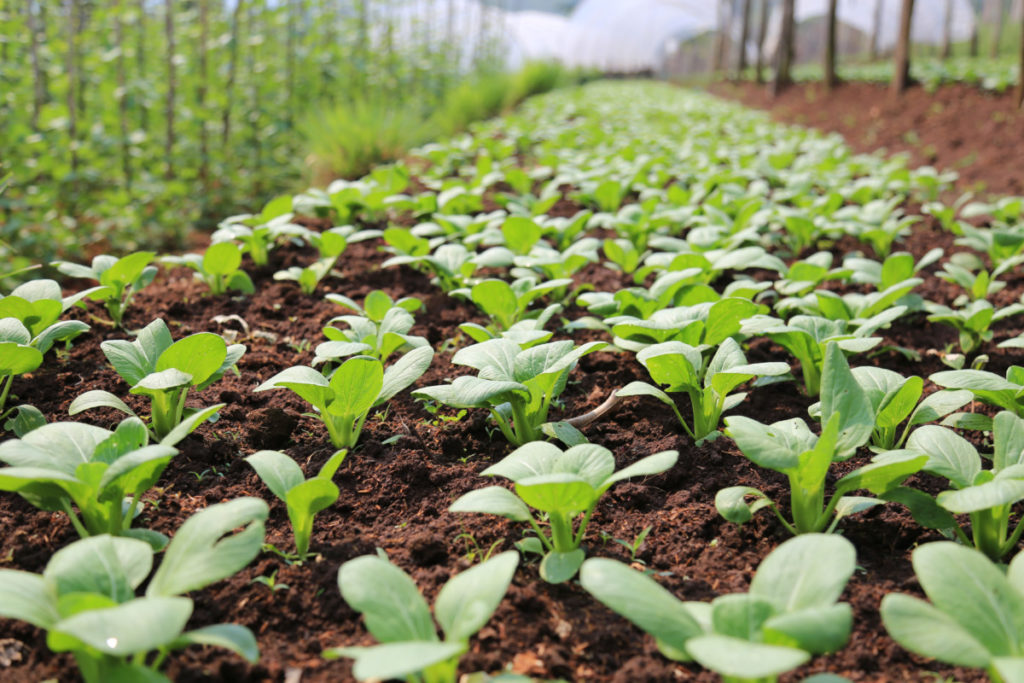
Once your veggies really start to take off as warmer weather comes in, you’ll begin to see whether or not your seeds were planted too close.
If you planted too densely, the solution to uncrowd your garden is simple.
As seedlings grow to the size of being transplants, they can be moved to areas of the garden where seeds did not germinate. You can also fill in the gaps with those plants that germinated overly well.
If you really have too much, you can eat many plants when they are young, such as carrots, chard and kale.
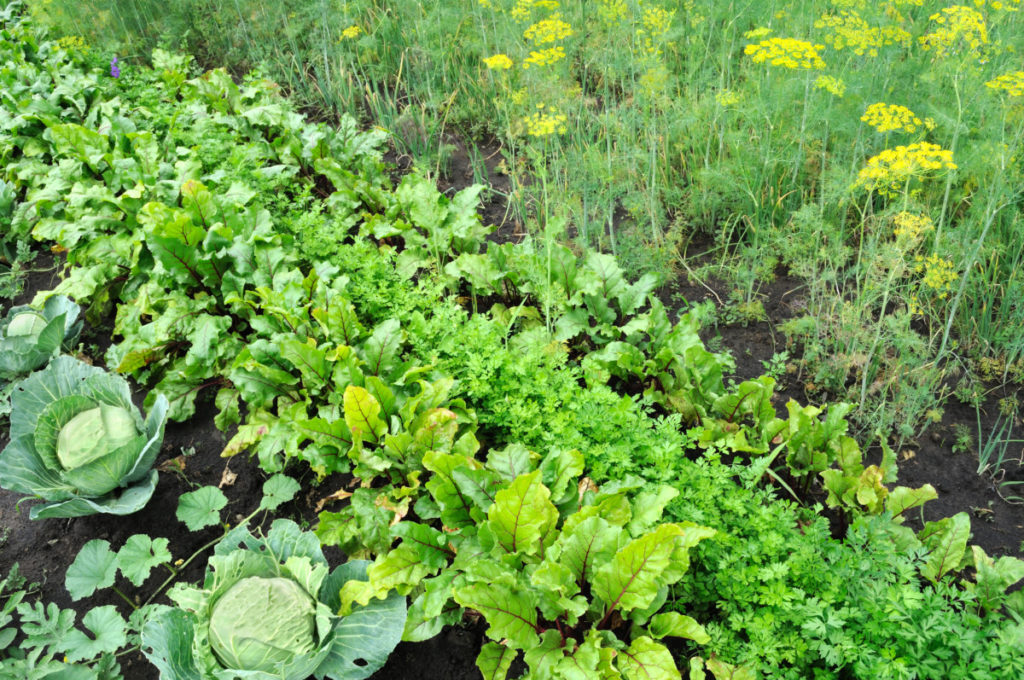
Plus, there is always the possibility that you could sell your excess transplants or give them away to gardeners in need. Thus helping to prevent a potential seed shortage – and making sure that everyone can get in on the act of growing their own food.
If your garden is looking a little bit sparse due to seeds not germinating as well as they should, there is no need to give up so soon. Simply change plans.
If it isn’t too late in the season, see if you can purchase transplants at the market, or plant some later varieties to fill in the gaps.
Where there is a will, there is always a way.
Wishing you a happy, healthy garden this season, followed by many, many more. Don’t forget to save seeds for next year too.

Get the famous Rural Sprout newsletter delivered to your inbox.
Join the 50,000+ gardeners who get timely gardening tutorials, tips and tasks delivered direct to their inbox.


